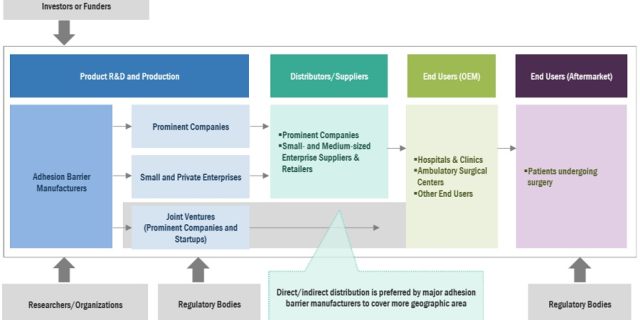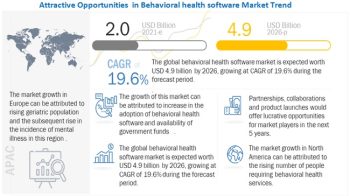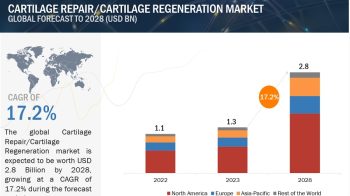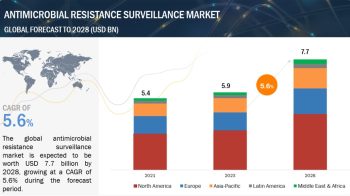
The healthcare industry continually evolves with advancements in medical technology and surgical techniques. Among these advancements, adhesion barriers have emerged as critical tools in minimizing post-operative complications and improving patient outcomes. This article delves into the dynamic landscape of the adhesion barrier market, focusing on key products such as regenerated cellulose, hyaluronic acid, and PEG (polyethylene glycol), highlighting their roles, market trends, and future prospects.
Adhesion Barrier Market by Product (Regenerated Cellulose, Hyaluronic Acid, PEG) – Global Forecast to 2028
Adhesion barrier market in terms of revenue was estimated to be worth $0.7 billion in 2023 and is poised to reach $0.9 billion by 2028, growing at a CAGR of 7.4%
Download a PDF Brochure: https://www.marketsandmarkets.com/pdfdownloadNew.asp?id=208132543
Understanding Adhesion Barriers
Adhesion barriers are medical devices used during surgical procedures to prevent the formation of adhesions. Adhesions are fibrous bands of scar tissue that can form between tissues and organs following surgery. These adhesions can lead to complications such as chronic pain, bowel obstructions, and infertility. Adhesion barriers work by creating a physical barrier between tissues, reducing the risk of adhesion formation and subsequent complications.
Market Segmentation by Product
Regenerated Cellulose
Regenerated cellulose adhesion barriers are among the most widely used products in the market. They are bioresorbable and typically made from plant-based materials. These barriers provide a physical separation between tissues during the critical healing period post-surgery. Regenerated cellulose products are favored for their efficacy and safety profile, making them suitable for various surgical applications including abdominal, gynecological, and orthopedic surgeries.
Hyaluronic Acid
Hyaluronic acid-based adhesion barriers capitalize on the biocompatibility and lubricating properties of hyaluronic acid. This naturally occurring substance is known for its ability to reduce inflammation and promote tissue healing. Hyaluronic acid barriers adhere to tissue surfaces, forming a temporary barrier that gradually degrades over time. These barriers are particularly advantageous in surgeries involving delicate tissues where minimizing tissue trauma is crucial.
Polyethylene Glycol (PEG)
PEG-based adhesion barriers are synthetic polymers designed to prevent tissue adherence by creating a hydrated gel-like barrier. PEG barriers are resilient and provide effective separation of tissues during the critical healing phase. They are known for their biocompatibility and ease of application across various surgical specialties. PEG barriers are often preferred in minimally invasive procedures due to their ease of handling and rapid absorption characteristics.
Market Dynamics and Growth Trends
The adhesion barrier market is witnessing significant growth driven by several factors:
Increasing Surgical Procedures: As surgical procedures become more advanced and widespread, there is a growing need to mitigate post-operative complications such as adhesions.
Technological Advancements: Ongoing research and development efforts are focused on enhancing the efficacy and safety profiles of adhesion barriers, driving product innovation.
Rising Healthcare Expenditure: Increased healthcare expenditure globally supports the adoption of advanced surgical technologies and products like adhesion barriers.
Regional Insights
Geographically, North America and Europe dominate the adhesion barrier market due to the high prevalence of surgical procedures and stringent healthcare regulations. However, the Asia-Pacific region is anticipated to witness rapid growth owing to the increasing adoption of advanced surgical techniques and rising healthcare infrastructure investments.
Challenges and Opportunities
Despite the promising growth prospects, the adhesion barrier market faces challenges such as regulatory hurdles, especially concerning product approval and reimbursement policies. Moreover, competition among market players intensifies as companies strive to innovate and introduce cost-effective solutions.
Opportunities abound in leveraging biotechnology and nanotechnology to develop next-generation adhesion barriers with improved performance and reduced adverse effects. Collaborations between healthcare providers, researchers, and manufacturers are crucial in driving innovation and addressing unmet clinical needs.
Conclusion
In conclusion, the adhesion barrier market continues to evolve with advancements in surgical techniques and biotechnology. Products such as regenerated cellulose, hyaluronic acid, and PEG play pivotal roles in minimizing post-operative complications and enhancing patient recovery. As the demand for surgical interventions grows globally, so does the need for effective adhesion barriers. The future of this market lies in innovation, regulatory compliance, and strategic partnerships to meet the evolving healthcare demands and improve patient outcomes worldwide.


